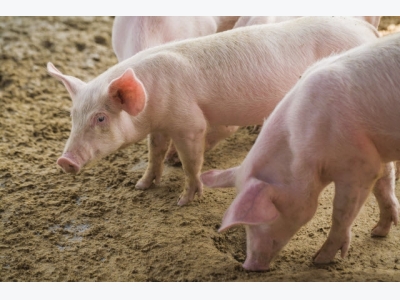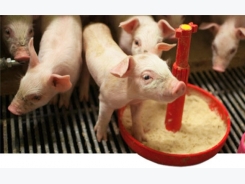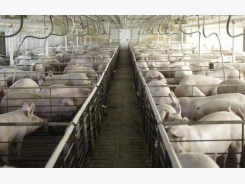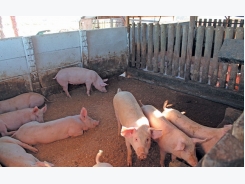Model shows pathogen survival in feed ingredients

The survival of important viral pathogens of livestock in imported animal feed ingredients may indeed represent a risk.
A research model designed to evaluate the survival of important viral pathogens of livestock in animal feed ingredients imported daily into the U.S. is providing further evidence that contaminated feed ingredients may indeed represent a risk.
The work consisted of a simulation of transport between continents.
Eleven viruses were selected based on global significance and impact to the livestock industry, including Foot and Mouth Disease Virus (FMDV), Classical Swine Fever Virus (CSFV), African Swine Fever Virus (ASFV), Influenza A Virus of Swine (IAV-S), Pseudorabies virus (PRV), Nipah Virus (NiV), Porcine Reproductive and Respiratory Syndrome Virus (PRRSV), Swine Vesicular Disease Virus (SVDV), Vesicular Stomatitis Virus (VSV), Porcine Circovirus Type 2 (PCV2) and Vesicular Exanthema of Swine Virus (VESV).
Surrogate viruses with similar genetic and physical properties were used for six viruses. Selected surrogates belonged to the same virus families as the target pathogen, and included Senecavirus A (SVA) for FMDV, Bovine Viral Diarrhea Virus (BVDV) for CSFV, Bovine Herpesvirus Type 1 (BHV-1) for PRV, Canine Distemper Virus (CDV) for NiV, Porcine Sapelovirus (PSV) for SVDV and Feline Calicivirus (FCV) for VESV. For the remaining target viruses, the actual pathogens were used.
Virus survival was evaluated using Trans-Pacific or Trans-Atlantic transboundary models involving representative feed ingredients, transport times and environmental conditions, with samples tested by PCR, VI and/or swine bioassay.
SVA (representing FMDV), FCV (representing VESV), BHV-1 (representing PRV), PRRSV, PSV (representing SVDV), ASFV and PCV2 were found to maintain infectivity during transport, while BVDV (representing CSFV), VSV, CDV (representing NiV) and IAV-S did not.
More viruses were found to survive in conventional soybean meal, lysine hydrochloride, choline chloride, vitamin D and pork sausage casings.
ASFV was the only virus that survived in stock feed as well as a number of other ingredients.
The results demonstrate survival of certain viruses in specific feed ingredients, particularly “high-risk combinations”, under conditions simulating transport between continents and provide further evidence that contaminated feed ingredients may represent a risk for transport of pathogens at domestic and global levels.
The research, which is the first of a three-part approach to explore the topic, was reported at the North American PRRS Symposium in Chicago, Ill. Presenting the findings were Scott A. Dee of Pipestone Applied Research, Pipestone Veterinary Services, Pipestone, Minn.; Diego Diel of South Dakota State University, and Megan Niederwerder of Kansas State University.
Niederwerder said the next steps include investigating oral dose and transmission in feed through natural feeding behavior and the assessment of tools for mitigating risk of virus transmission in feed and feed ingredients.
Virus survival in feed ingredients is not just a pork industry problem, it impacts all species, Dee also noted. He said feed dust is big the wildcard as it can spread a virus quickly.
Related news
Tools

Phối trộn thức ăn chăn nuôi

Pha dung dịch thủy canh

Định mức cho tôm ăn

Phối trộn phân bón NPK

Xác định tỷ lệ tôm sống

Chuyển đổi đơn vị phân bón

Xác định công suất sục khí

Chuyển đổi đơn vị tôm

Tính diện tích nhà kính

Tính thể tích ao




 EU: Stepwise tactics proposed to limit copper in…
EU: Stepwise tactics proposed to limit copper in…  Basic infrastructure for small-scale pig farming
Basic infrastructure for small-scale pig farming